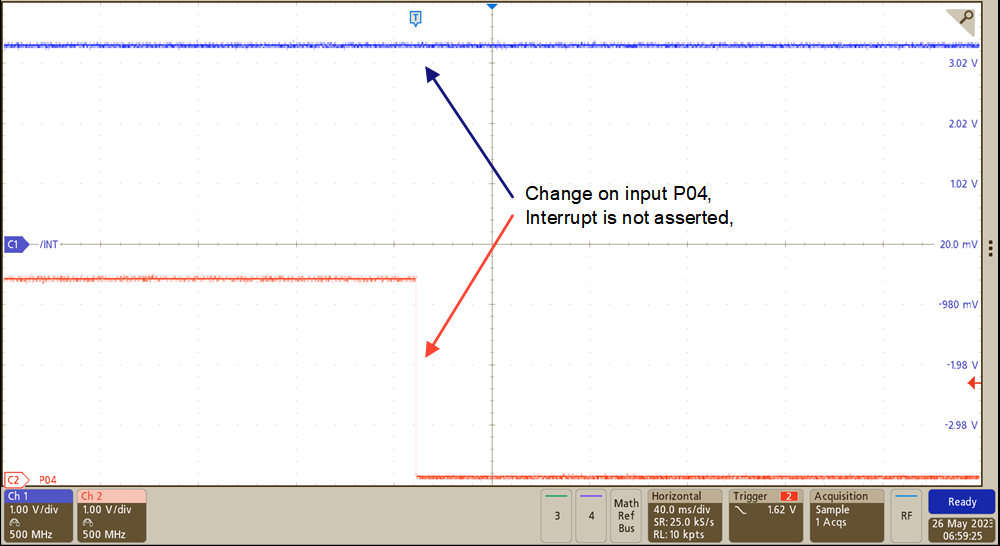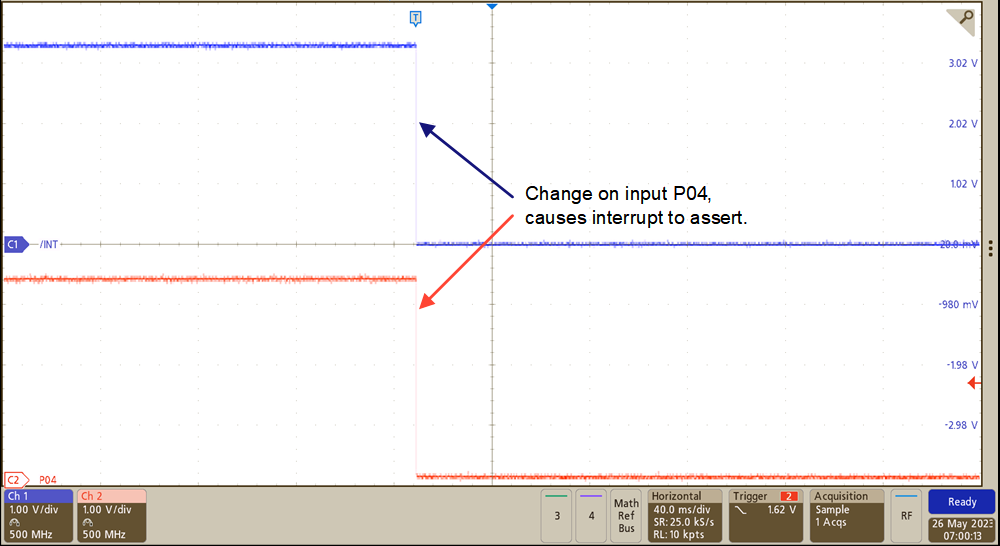SCPA070 june 2023 TCAL6408 , TCAL6416 , TCAL9538 , TCAL9539 , TCAL9539-Q1
- 1
- Abstract
- Trademarks
- 1 Introduction
- 2 Programmable Output Drive Strength
- 3 Programmable Pull-Up or Pull-Down Resistors
- 4 Latchable Inputs
- 5 Maskable Interrupt
- 6 Interrupt Status Register
- 7 Programmable Open-Drain and Push-Pull Outputs
- 8 Benefits of Using TCAL I/O Expanders Versus TCA I/O Expanders
- 9 Summary
- 10References
5 Maskable Interrupt
Using Agile I/O’s, the user can choose to turn off or on the built-in interrupts to the I/O expander by enabling or disabling bits in the interrupt mask register. When an interrupt is masked, changes of state on an input do not assert a signal on the interrupt pin. If the interrupt is unmasked, a change in state of an input pin does assert an interrupt.
For example, an input that changes from a 0 to a 1 does not assert an interrupt if masked.
Changing the input from a 0 to a 1 when the interrupt is unmasked does assert an interrupt.
Maskable interrupts are useful in priority switching. When one task is more important than another, the engineer can select to mask an interrupt to push that GPIO’s task lower in the priority list.
Figure 5-1 shows P04 changing state from a high to low logic value. This change in state does not assert an interrupt on /INT because the interrupt is masked.
 Figure 5-1 Interrupt is Not Asserted with
Change on Input P04
Figure 5-1 Interrupt is Not Asserted with
Change on Input P04In the alternate case in Figure 5-2, the interrupt on P04 is unmasked. In this case, expect to see the /INT pin assert with a corresponding change on the input pin.
 Figure 5-2 Interrupt is Asserted With a
Change on P04
Figure 5-2 Interrupt is Asserted With a
Change on P04